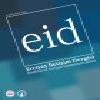Netnografik Analizle Türkiye’de YouTuberlar ve Değişen Ahlaki Panik Fenomeni
Ahlakî panik, YouTuber, Mikro-Ünlülük, Çevrimiçi Kültür, Netnografi
YouTubers and Changing Moral Panic Phenomenon In Turkey with Netnographic Analysis
Moral Panic, YouTuber, Micro-Celebrity, Online Culture, Netnography,
___
- Bainbridge, W. S. (2010). New World View. William Sims Bainbridge (Ed.). Online Worlds: Convergence of the Real and the Virtual içinde (s.7-19). London: Springer-Verlag.
- BBC (2019, 2 Ağustos). Netflix: RTÜK’ün internet yönetmeliği ne getiriyor, kurul üyeleri ne diyor?. Erişim adresi (19 Kasım 2019): https://www.bbc.com/turkce/haberlerturkiye- 49193378
- Burgess, J. ve Green, J. (2009a). The Entrepreneurial Vlogger: Participatory Culture Beyond the Professional Amateur Divide. P. Snickars ve P. Vondereau (Ed.). The YouTube Reader içinde (89-107). Stockholm: National Library of Sweden.
- Burgess, J. ve Green, J. (2009b). YouTube Online Video and Participatory Culture. Cambridge: Polity Press.
- Clarke, J., Hall, S., Jefferson, T. ve Roberts, B. (2003). Subcultures, Cultures and Class: A theoretical overview. Stuart Hall ve Tony Jefferson (Ed.). Resistance Through Rituals: Youth subcultures in post-war Britain içinde (s.9-74). London: Routledge.
- CNN Türk (2018, 8 Kasım). Danla Bilic: Hedef gösteriliyoruz, linç etmek istiyorlar. Erişim adresi (9 Kasım 2019): https://www.cnnturk.com/magazin/danla-bilic-hedefgosteriliyoruz- linc-etmek-istiyorlar
- Cohen, A. K. (1965). The Sociology of the Deviant Act: Anomie Theory and Beyond. American Sociological Review, 30(1), 5–14.
- Cohen, P. (1972). Sub-Cultural Conflict and Working Class Community. Working Papers in Cultural Studies, No. 2, 5-52.
- Cohen, S. (2002). Folk Devils and Moral Panics: The Creation of the Mods and Rockers. London: Routledge.
- Cohen, S. (2014). “Deviance and Moral Panics”. Tammy L. Anderson (Ed.). Understanding Deviance: Connecting Classical and Contemporary Perspectives içinde (s.356-362). New York: Routledge.
- Drotner, K. (1999). Dangerous Media? Panic Discourses and Dilemmas of Modernity. Paedagogica Historica: International Journal of the History of Education, 35(3), 593- 619.
- Eisenlauer, V. (2013). A Critical Hypertext Analysis of Social Media: The True Colours of Facebook. London: Bloomsburry Publishing.
- Goode, E. ve Ben-Yehuda, N. (2011). Grounding And Defending The Sociology Of Moral Panic. Sean P. Hier (Ed.). Moral Panic and the Politics of Anxiety içinde (s.20-36). London: Routledge.
- Habertürk (2017, 30 Aralık). Altın Kelebek Ödülü geri alınan Enes Batur açıklama yaptı. Erişim adresi (19 Kasım 2019): https://www.haberturk.com/enes-batur-un-altinkelebek- odulu-neden-geri-alindi-enes-batur-dan-aciklama-1776381
- Hall, S., Critcher, C., Jefferson, T., Clarke, J. ve Roberts, B. (1978). Policing the Crisis Mugging, the State, and Law and Order. London: MacMillan.
- Hebdige, D. (1979). Subculture: The Meaning of Style. London: Routledge.
- Hier, S. P. (2011). Introduction: Bringing moral panic studies into focus. Sean P. Hier (Ed.). Moral Panic and the Politics of Anxiety içinde (s.1-16). London: Routledge.
- Hürriyet (2018, 7 Kasım). Enes Batur, Kerimcan ve Danla Bilic’e suç duyurusu. Erişim adresi (9 Kasım 2019): http://www.hurriyet.com.tr/kelebek/magazin/enesbatur- kerimcan-ve-danla-bilice-dava-soku-41011804
- İnternet Haber (2018, 21 Ekim). Enes Batur son videosunda amcasına küfür etti kriz çıktı!. Erişim adresi (9 Kasım 2019): https://www.internethaber.com/enes-baturson- videosunda-amcasina-kufur-etti-kriz-cikti-1912631h.htm
- Jenkins, H., Ford, S. ve Green, J. (2013). Spreadable Media: Creating Value and Meaning in a Networked Culture. New York: New York University Press.
- Jenkins H., Purushotma, R., Weigel, M., Clinton, K. ve Robinson, A. J. (2009). Confronting the Challenges of Participatory Culture: Media Education for the 21st Century. Cambridge: MIT Press.
- Kozinets, R. V. (2002). The Field Behind the Screen: Using Netnography for Marketing Research in Online Communities. Journal of Marketing Research, 39, 61-72.
- Kozinets, R. V. (2010). Netnography: Doing Ethnographic Research Online. London: Sage.
- Kozinets, R. V. (2012). Marketing Netnography: Prom/ot(ulgat)ing a New Research Method. Methodological Innovations Online, 7(1) 37-45.
- Lange, P. G. (2008). (Mis)Conceptions about YouTube. Geert Lovink ve Sabine Niederer (Ed.). Video Vortex Reader: Responses to YouTube içinde (s.87-100). Amsterdam: Institute of Network Cultures.
- Lange, P. G. (2014). Kids on YouTube: Technical Identities and Digital Literacies. Walnut Creek, CA: Left Coast Press.
- Lumby, C. ve Funnell, N. (2011). Between heat and light: The opportunity in moral panics. Crime Media Culture, 7(3), 277–291.
- Marwick, A. (2016). You May Know Me From YouTube: (Micro)-Celebrity in Social Media. Marshall, P.D. ve Redmond, S. (Ed). A Companion to Celebrity içinde (s.333-350). Chichester: John Wiley & Sons.
- Mutlu, E. (2004). İletişim Sözlüğü. Ankara: Bilim ve Sanat Yayınları. Rohloff, A. ve Wright, S. (2010). Moral Panic and Social Theory Beyond the Heuristic. Current Sociology, 58(3): 403–419.
- Senft, T. (2008). Camgirls: Celebrity and Community in the Age of Social Networks. New York: Peter Lang.
- Soygüder, Ş. (2007). Moral Panic (Törel Ürkü) Kavramı ile Medyada Yer Alan Örnek Haberlerin Değerlendirilmesi. Yeni Düşünceler. 2, 93-110.
- Strangelove, M. (2010). Watching YouTube: Extraordinary Videos by Ordinary People. Toronto: University of Toronto Press.
- Strangelove, M. (2015). Post-TV: Piracy, Cord-Cutting, and the Future of Television. Toronto: University Of Toronto Press.
- Thompson, K. (1998). Moral Panics. London: Routledge.
- Weber, M. (1978). Economy and Society: An Outline of Interpretive Sociology. California: University of California Press.
- Young, J. (1971). The role of the police as amplifiers of deviancy, negotiators of reality and translators of fantasy. Stanley Cohen (Ed.). Images of Deviance içinde (s.27-61). Harmondsworth: Penguin.
- Young, J. (2007). Slipping Away – Moral Panics Each Side of ‘the Golden Age’. D. Downes, P. Rock, C. Chinkin, ve C. Gearty (Ed.). Crime, Social Control and Human Rights: From Moral Panics to States of Denial, Essays in Honor of Stanley Cohen içinde (s.53–65). Cullompton, UK: Willan Publishing.
- ISSN: 1308-3198
- Yayın Aralığı: 2
- Başlangıç: 2009
- Yayıncı: Erciyes Üniversitesi İletişim Fakültesi
Özden ÖZLÜ, Gülseli Aygül ALAN
Kamusal Alanın Yeni Yüzü Ekşi Sözlük Üzerinden Toplumsal Cinsiyet, İktidar ve Beden Analizi
Dijital Çağda Kırgızistan’da Radyo Yayıncılığı
Topçugül NARMAMATOVA, Hamza ÇAKIR
Nefret Söyleminin İnşasında Sosyal Medyanın Rolü: Ekşi Sözlük Örneği
Türk Sinemasında Ayrılma Dereceleri: Sühely Eğriboz Sayısı
Sosyalleşme ve Sosyalleşmenin Sosyal Medya Mecralarındaki Anlamsal ve İşlevsel Dönüşümü
Wolverine (2013) Filminin Tekno- Oryantalizm Bağlamında İncelenmesi
Pamuk Prenses ve Yedi Cüceler Masalının Üç Hali: Grimm Kardeşler, Walt Disney Ve Ertem Göreç
